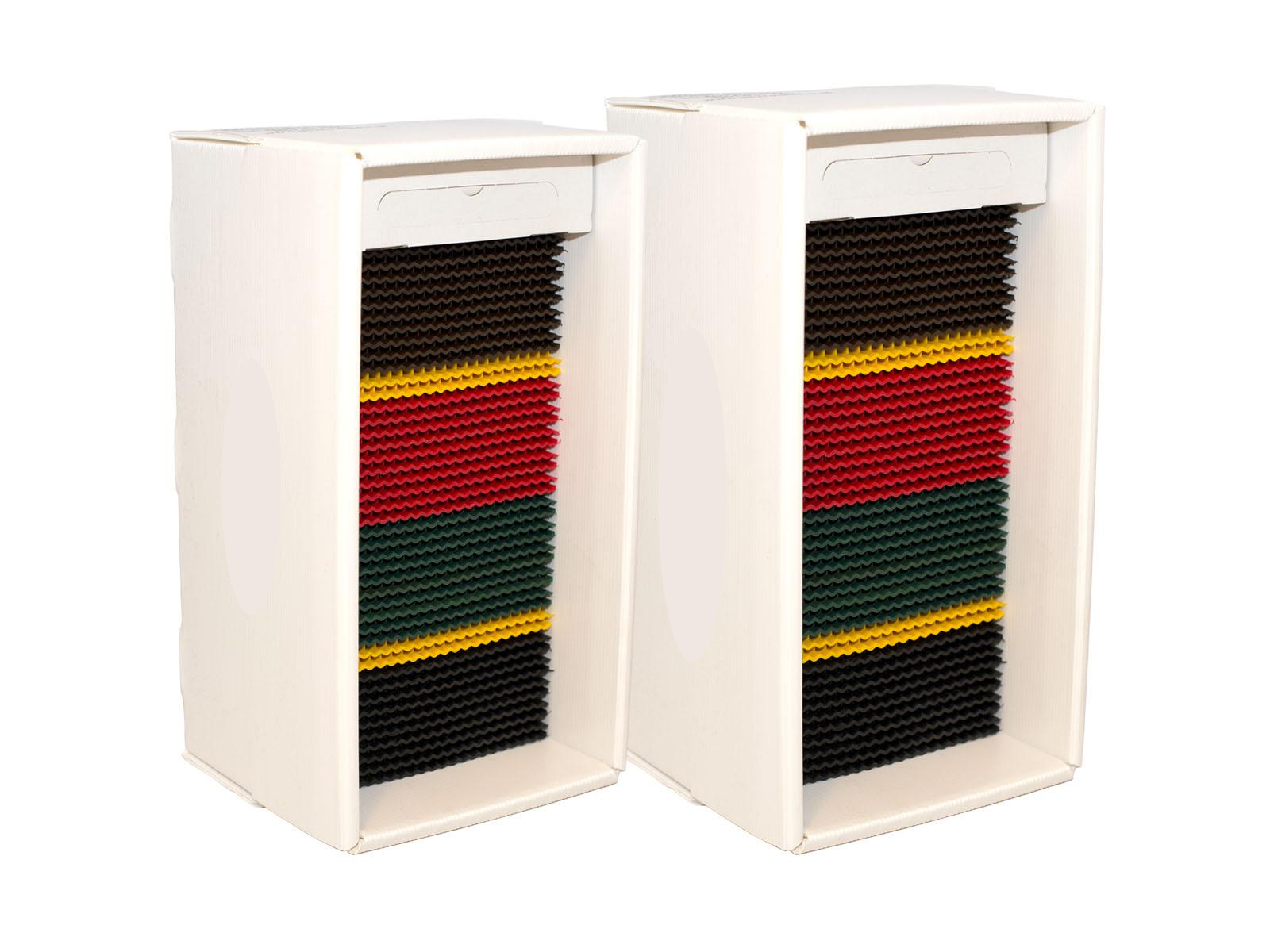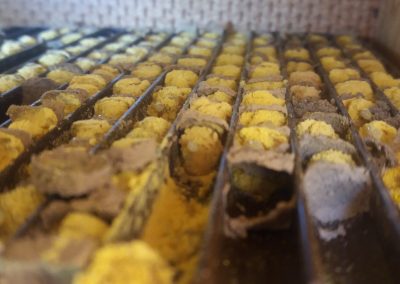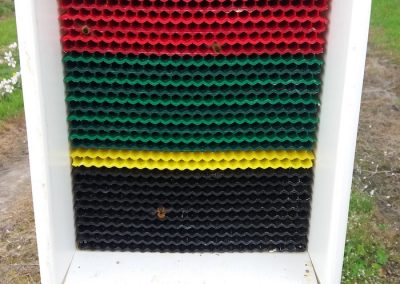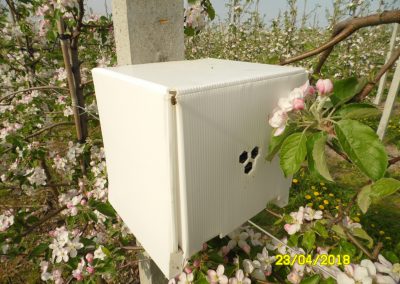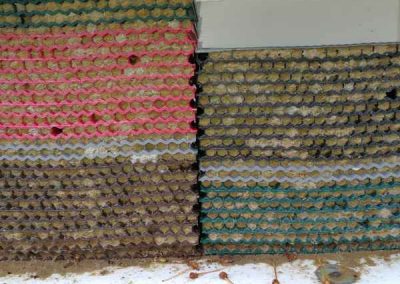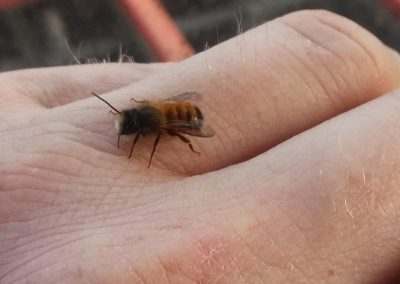The fertilization of fruit trees plays an ever-greater role in our ecosystem. An excellent way to promote this pollination is the use of Red Mason Bees. This species of wild bees is not used for honey production, but they can be used for fertilization of flowers. Red Mason Bees live solitarily, that means that they do not form a colony, they build their own little cocoon, each for themselves.
The Red Mason Bee hibernates in her cocoon and in spring is placed in a beehive in an orchard.
ADVANTAGES OF THE RED MASON BEE
Temperature
You can work with the Red Mason Bee very early in the season as it is already active from 8-10 °C.
Hairiness
Due to their dense hair, better pollination can be achieved.
Speed
The Red Mason Bee is very fast and can pollinate more flowers in a short time.
Fertilization radius
Red Mason Bees look for their flowers near their nesting site, so the flying radius is approximately a hundred meters.
Safety
As the Red Mason Bee is a very peaceful and calm bee species, you need not be afraid of stings.

The plastic system
We tested the plastic system “BEES for TREES” ourselves in our orchards.
It’s easy because only 2-4 boxes are needed per ha.
It is very cost effective as you only buy it once and can use it for many years.
The plastic plates are very easy to clean with water and are gladly accepted by the Red Mason Bee. The system is well protected from wind and rain and guarantees a good population for next year.
OUR PRODUCTS
Beehive – Standard
The beehive is a plastic system consisting of 44 plates which lie honeycombed on top of each other forming 990 shafts (breeding holes). This honeycombed structure is then placed inside a rigid polyethylene box with a cellular structure. This box insulates the honeycomb from weather such as UV radiation or moisture. The system is completed with a hatching box made of cardboard, which is used for storage of the bee cocoons which are removed from the plastic plates in autumn or winter. In Spring after breaking the seal of the hatching box, the Red Mason Bees can leave the box.
Beehive – Mini
The beehive in the mini variant is a smaller version of the standard. It consists of a plastic system with 16 stacked plates. Due to the arrangement of the modules, their shape resembles a honeycomb. The mini version has 360 shafts (breeding holes). Another element that forms the hive is a polyethylene box with a cellular structure. The coating has protective properties and perfectly isolates the honeycomb against changing weather conditions such as UV radiation or moisture. A difference of the beehive in the mini version is the possibility to close it. The artificial habitat for insects has inlet openings whose size prevents various rodents from entering and searching for bird protection.
The hive also includes a hatching box made of cardboard. Its purpose is to store the cocoons of the Red Mason Bee over the autumn and winter. The structure has the perfect hatching conditions for the cocoons. After the autumn-winter period, the bees leave the box after breaking the seal.
Segregation comb
The segregation comb is made of acid-resistant stainless steel. It is used to remove cocoons from the wavy plastic plates. This tool accelerates the removal of the cocoons considerable. However any infected cocoons should be removed with a tweezer before the healthy ones are removed with the comb. Poor separation can lead to infection of the whole bee population by parasites within 3 years.
Hatching box
The hatching box is made of cardboard and is used to store bee cocoons. In it the cocoons have the ideal conditions to hibernate. After breaking the seal in spring, the hatched bees can leave the box freely. After the release of the bees, it must be burned with the cocoon residues. This is essential in order to reduce the possible contamination of subsequent generations with native parasites (e.g. mites).
BRIEF INSTRUCTIONS
- You buy only once a beehive (mini or standard version) and the cocoons of the Red Mason Bee.
- You set up the hive in the orchard 2 – 3 weeks before flowering.
- When the bees have left the cocoons, remove the hatching box from the hive and burn this box.
- In the autumn bring the beehive into an unheated room.
- Remove the cocoons from the honeycomb in autumn / winter with the segregation comb and place in a new hatching box made of cardboard. Then the bee cocoons are stored refrigerated until next spring.
- You wash, dry and reassemble the plates.
- 2 – 3 weeks before flowering, place the beehive with the plates and the unsealed hatching box back into the orchard.
YOUR REQUEST
SCHNEIDER KG
Elz 5
A-8212 Pischelsdorf
Steiermark/ Styria

